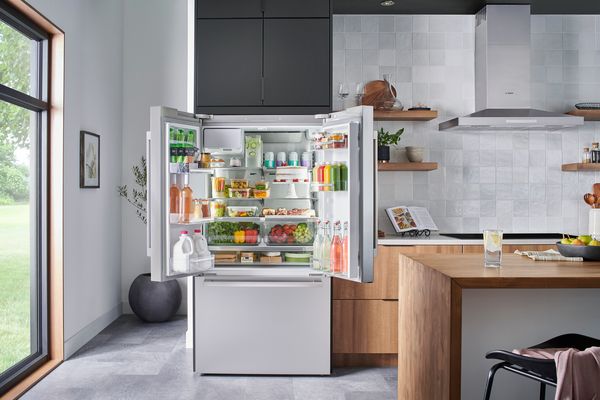Welcome to another detailed guide from TheKitchenApplianceDad.com. Today, we’re tackling a common household conundrum: a refrigerator that isn’t cooling properly. It’s a major inconvenience when your fridge fails to keep your food cold and fresh. But before you call in a professional, let’s explore some possible reasons why your refrigerator isn’t cooling and how you might be able to fix them yourself.
Before we dive into the specific issues, it’s important to understand that a refrigerator not cooling properly can be due to various reasons, ranging from simple fixes to more complex mechanical problems. Identifying the root cause is the first step towards a solution.

Problem: One of the most common causes of a refrigerator not cooling is dirty condenser coils. These coils are located at the back or beneath your fridge and can accumulate dust and pet hair over time.
Solution: Cleaning the condenser coils is relatively simple. Unplug your refrigerator, locate the coils, and use a coil brush or vacuum to remove debris. Doing this once every six months can significantly improve your refrigerator’s cooling efficiency.
Problem: The evaporator fan is responsible for circulating cold air from the coils throughout the unit. If this fan is faulty, the air won’t circulate properly, leading to uneven cooling.
Solution: Check if you can hear the fan running or feel air blowing from the freezer vents. If not, it might be time to replace the fan. This task can be a bit more complex, so referring to your refrigerator’s manual or consulting with a professional might be necessary.
Problem: The start relay works with the compressor to start the fridge. If the start relay is defective, the compressor might not work at all, which means the fridge won’t cool.
Solution: To test the start relay, unplug the fridge and locate the relay on the compressor. Remove it and shake it; if you hear a rattling noise, it needs replacement. Start relays are generally inexpensive and can be purchased at appliance repair shops or online.
Problem: A broken thermostat can fail to regulate the temperature inside your refrigerator, causing it to be too warm.
Solution: Turn the thermostat from the lowest setting to the highest setting and listen for a click. If you do not hear a click, it’s likely your thermostat needs replacing. This is a more delicate operation and might require a professional if you’re not comfortable doing it yourself.
Problem: If your refrigerator door seals are broken or dirty, cold air can leak out, forcing your fridge to work harder to keep cool.
Solution: Inspect the seals around the doors for any tears or leaks. Clean them with a mild detergent and replace them if necessary. This can also improve your refrigerator’s energy efficiency.
Problem: Overpacking your refrigerator can block air vents, restricting air flow and causing uneven cooling.
Solution: Rearrange your refrigerator to ensure that air can circulate freely. Try not to block any inlets or outlets, and consider storing some items elsewhere if your fridge is too full.
Problem: The compressor is like the heart of your refrigerator, responsible for refrigeration cycle. If the compressor is not working, the fridge will not cool.
Solution: Compressor problems are often serious and usually require professional intervention. However, ensuring that your refrigerator is properly ventilated and not overloaded can prolong the life of the compressor.
By understanding these common issues, you can quickly troubleshoot and address many of the reasons why your refrigerator might not be cooling. Remember, regular maintenance can save you from future headaches and keep your fridge running smoothly for years to come. For more tips and appliance advice, keep visiting us at TheKitchenApplianceDad.com.

